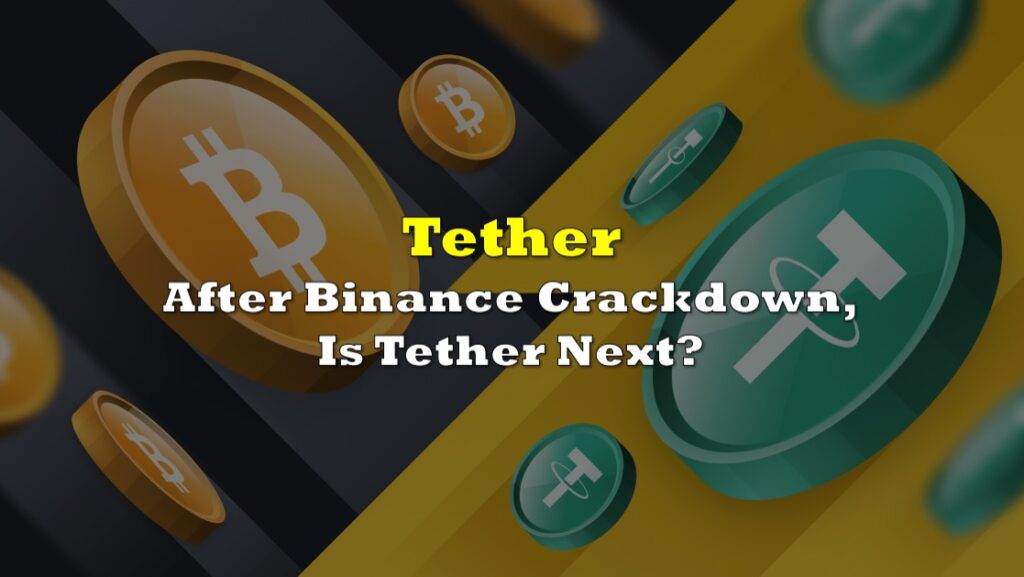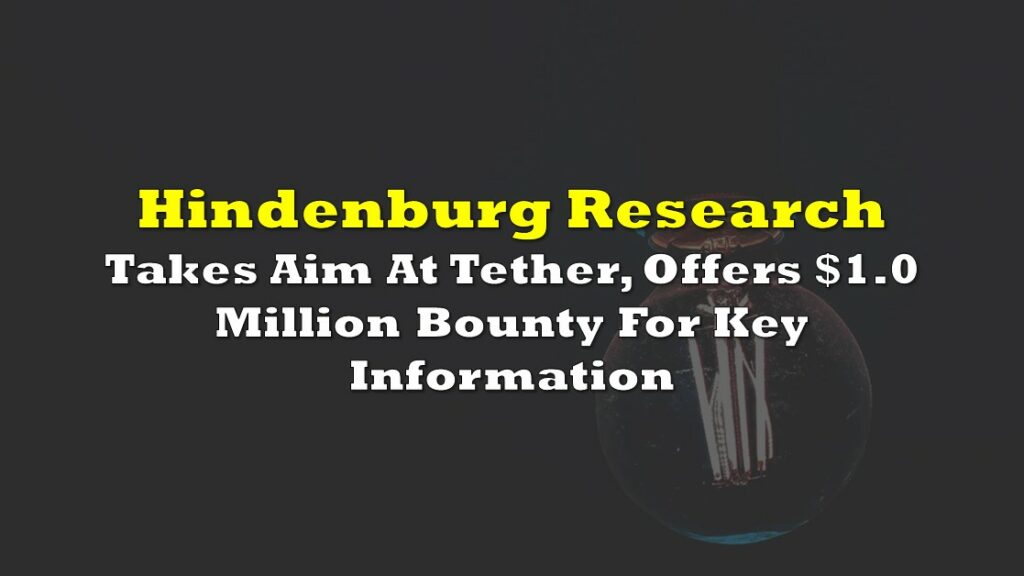Tether has been ordered by the court to produce the documents being requested by the plaintiff in an ongoing legal battle, including “those sufficient to establish USDT Reserves.” The decision relates to the ongoing crypto asset litigation case against the stablecoin issuer and crypto exchange Bitfinex.
After hearing both sides, the Southern District Court of New York is compelling the defendants to produce all “requests for production” documents laid out by the plaintiffs. This includes:
- RFP 29: all “general ledgers, balance sheets, income statements, cash-flow statements, and profit and loss statements”
- RFP 31: “documents sufficient to establish USDT Reserves,” including statement accounts of “all banks or other institutions” tied to the defendants’ funds or reserves
- RFP 22-25, 72: all transaction records of stablecoin or other crypto trades by the defendants, including the addresses, wallets or accounts, and its respective purchases
In its decision, the court maintains that the documents the plaintiffs are requesting “are undoubtedly important, as they relate to the backing of USDT and cryptocommodities transactions.”
At the center of the case is determining whether Tether issued the stablecoin USDT with a misrepresented backing of reserves and was then exchanged within the Bitfinex platform to inflate the price of bitcoin.
Stablecoins are called as such because they are crypto assets expected to be tied to a more-stable fiat like the US dollar.
Tether’s contentions: “We already agreed to produce”
After the court order was handed down, Tether immediately tried to downplay the recent development, saying it, “is a routine discovery order and does not in any way substantiate plaintiffs’ meritless claims.”
“We had already agreed to produce documents sufficient to establish the reserves backing USDT, and this dispute merely concerned the scope of documents to be produced,” the company said in its blog.
The defendants initially sent a letter asking the court to deny the plaintiff’s requests, contesting the nature of its broadness and timeliness.
In particular, the firm said that RFP 29 is “a broad request neither tailored to Plaintiffs’ claims nor necessary,” since it maintains it has already agreed to produce documents sufficient to establish USDT reserves.
As the firm explained, their contention is to the extent of the scope, claiming that RFP 29 “will not be limited to “a ledger” and will include the underlying bank statements and other records.”
In their request, the plaintiffs cited the findings and documents the crypto firm provided to the Commodity Futures Trading Commission and the New York Attorney General regarding the reserves backing USDT.
“The vast majority of those documents have already been produced. If those documents were sufficient for the CFTC and the New York Attorney General, they are sufficient for Plaintiffs,” the firm registered in their letter.
Popular Twitter account @bitfinexed, who has been exposing relevant information on the stablecoin issuer and the crypto exchange, called out Tether’s characterization of its willingness to comply to this request.
Fun Fact: When the NYAG was requesting documents from Bitfinex, Bitfinex sent them pictures of tweets and irrelevant documents. pic.twitter.com/oGwbbsrL7A
— Bitfinex’ed 🔥 Κασσάνδρα 🏺 (@Bitfinexed) September 21, 2022
The firm also have the same contention on scope with RFP 31, specifically the request of account statements relating to the defendants’ other funds. They are contesting the relevance of these funds that “do not constitute USDT reserves” to the case.
With respect to producing transaction records, the defendants are also contesting the broadness of the request as well.
“These requests are overbroad and unduly burdensome on their face, considering that Tether is the issuer of a stablecoin and Bitfinex is a cryptocurrency exchange. Transactions involving stablecoins and other crypto assets span the [Defendants’] entire business,” the firm noted in its letter.
The firm also enumerated all the documents it has already agreed to produce, including documents relating to the defendants’, “use of the cryptocommodity exchanges… for the transfer of newly issued USDT,” and communication documents with the exchange defendant relating to “the issuance or transfer of USDT…to transfers, collateral, backing, or reserves of USDT.”
“Plaintiffs do not — and cannot — explain why these documents are insufficient,” the firm added.
Court disagrees: “Not in a position to deny the relevance”
The court, nevertheless, ordered the defendants to produce the requested documents, agreeing with the plaintiffs manifestation that the defendants’ representations regarding what will be produced is “unclear.”
“In the absence of agreement between the parties, the Court finds that Plaintiffs’ financial records RFPs [29, 31] are not overly broad, particularly given that Defendants have had opportunities to make sample productions of the financial records RFPs, but have failed to do so despite Plaintiffs’ agreement to such proposal,” the court noted.
The court agrees that the plaintiffs need access to the documents “to assess the backing of USDT with US dollars, and to allow a forensic accountant to assess the USDT reserve.”
With respect to the defendants’ concern on encroaching disclosures of assets and funds that they maintain is unrelated to the case at hand, the court is siding with the plaintiff in its representation of the need for the documents.
On the “overbroad” request for transaction records, the court said it, “is not in a position to deny the relevance of the transactions RFPs [22-25, 71].”
The defendants also contested the timeliness of the request for the transaction records, saying it has “served objections in January and Plaintiffs never raised those RFPs in any of the parties’ discussions until August.”
While the court agrees “that these issues should have been resolved at an earlier date,” it said that it “will not fully fault Plaintiffs where both sides knew there was disagreement.”
Semantics
In its letter to the court, the defendants alleged that the plaintiffs “[misstated] their own allegations” when it made the RFPs 29 and 31. As it cited the court, it claims that the issue at hand is whether Tether issued USDT “completely unbacked and printed out of thin air.”
“Perhaps recognizing that the evidence does not support those allegations, Plaintiffs now assert–incorrectly–that their claims relate to whether USDT was ‘fully backed by US dollars’ as opposed to other assets,” the company noted.
In its decision, the court agreed with the plaintiffs who “plainly explain why they need this information: to assess the backing of USDT with US dollars, and to allow a forensic accountant to assess the USDT reserve.”
New York Court orders Bitfinex to produce documents.
— Bitfinex’ed 🔥 Κασσάνδρα 🏺 (@Bitfinexed) September 21, 2022
One teensy-tiny problem, Bitfinex employee Drew Samsen said Tether was printing Tether in exchange for crypto, not US dollars back in November 2017.
And Tether admitted to the CFTC and NYAG to backing Tethers with crypto… pic.twitter.com/uZwNw8TtbC
Down the line, the crux of the case would be on the actual reserves used to back the issued stablecoin USDT and if it was tied to US dollars as it has represented before. Whether the case would be dismissed if it was backed by other crypto assets–contrasting the “completely unbacked” argument–is also a point for discussion.
Information for this briefing was found via the sources mentioned. The author has no securities or affiliations related to this organization. Not a recommendation to buy or sell. Always do additional research and consult a professional before purchasing a security. The author holds no licenses.










One Response
Thanks For Sharing This Article. It’s Very Much Helpful For Us. To Understand The Digital Currency.
codes are created by a math function that turns digital information into a string of numbers and letters.
If that information is edited in any way, the hash code changes as well.
Waiting For The More Exclusive Articles LIke This. Once Again Thankyou So Much For Sharing.